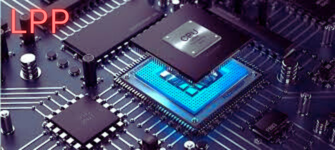What is the Definition of a Computer? A Complete Guide to Understanding Computers2025.
A computer is a machine that can reuse, store, and affair data, or information, similar as figures, words, and lists. Computers can perform a wide range of tasks, including
Computers use programs, which are collections of operations built into the computer’s hardware or loaded into its memory. Most computers employ a binary system, which uses the variables 0 and 1 to carry out functions
Computers have penetrated nearly every conceivable area of our lives in the digital age. However, what is a computer? From the devices we work on, communicate with others on, and entertain ourselves on to the giant machinery running modern industries, they have become indispensable. We explore the definition of what constitutes a computer, including its key elements, the history of its development, and the various forms it comes in. Let’s proceed with what makes up a computer and how they function.What is the Definition of a Computer? A Complete Guide to Understanding Computers2025.
What is a Computer?
- Keyword focus: “What is a computer?”, meaning of a computer”
Word count: Make use of about 300 wordsWhat is the Definition of a Computer? A Complete Guide to Understanding Computers2025.
A computer is an electronic device that receives, processes, stores, and outputs information. It performs various tasks automatically or semi-automatically based on instruction. Computers work by calculating complex calculations, logical operations, and data manipulation for meaningful results. They apply the four fundamental steps of processing: input, processing, storage, and output.
A more technical definition describes a computer as a programmable machine aimed at performing sequences of arithmetic or logical operations. For instance, a computer functions on a binary system (ones and zeros) that it can interpret and process data quickly and efficiently. The central architecture of any computer is based on the CPU, which does most of the calculations and instructions for the computer, and on the memory, where data may be temporarily or permanently held.
Under this heading, subtitles could be:
How Computers Process Information: In brief outline the functions of the CPU, memory and storage.
Binary Code and Machine Language: Explain basics of how computers interpret data.

Main Components of a Computer
Focus Keywords: “parts of a computer,” “computer hardware”
Word Count: About 300 words
Computers consist of several vital parts required for processing and storing data. Some of the main parts are
- CPU: The CPU is the computer’s brain as it processes everything.
- Memory (RAM): This is a part of the computer that uses RAM to temporarily hold data so that the CPU can access it as quickly as possible.
- Storage: Data can be stored in HDDs and SSDs.
- Motherboard: This connects all the different parts of the computer, enabling communication.
- Input and Output Devices: Devices like keyboards, mice, and monitors are input and output devices, through which the user interacts with the computer.
- Subheadings for even more detail could include:
- CPU and Processing Power: How it Affects computer performance.
- Storage Types (HDD vs SSD): Comparison of storage options.
- History of Computers
Keyword focus: “history of computers,” “evolution of computers”
Word count: 300 words
The history of computers goes way back, even to when the first tools were introduced, like the abacus. The modern computer machine was introduced in the 20th century with devices such as ENIAC and UNIVAC. Since then, computers have evolved, from big, room-occupying mainframes into compact personal computers and more recently, portable devices.
Timeline of evolution of computers:
First Generation (1940s-1950s) – Vacuum tube-based computers.
Second Generation (1950s-1960s) – Transistor-based computers.
Third Generation (1960s-1970s) – Introducing integrated circuits.
Fourth Generation: Microprocessors and personal computers.
Fifth Generation and Beyond: AI and quantum computing.
Each generation brought tremendous improvement in processing power, size, and functionality to bring us the powerful, compact devices we use today.
Types of Computers
- Keyword focus: “types of computers,” “different types of computers”
- Word count: 250
- Computers can be broadly classified into various types. These depend on their size, functionality, and purpose, which can be summarized in the following:
Supercomputers. The most powerful computers in existence, applied to perform complex simulations and other scientific research.
Mainframe Computers. These are powerful systems of computers used in corporations to process large chunks of data.
Personal Computers, or PCs. This involves desktop and laptop computers to be used by individuals.
Tablets and Smartphones. Portable devices used daily for ordinary tasks and communication.
Embedded Systems: Special-purpose computers installed within other products such as cars and home appliances.
Different types of computers have different applications, and these are made to satisfy certain needs.
Applications of Computers in Today’s World
- Keyword focus: “uses of computers,” “computer applications”
- Word count: Aim for 200 words
Computers are used in virtually every industry and sector, from business and education to healthcare and entertainment. In business, computers are essential for data management, communication, and productivity. In healthcare, they enable advanced diagnostic tools and patient management systems. In education, computers facilitate e-learning and access to information. Additionally, computers power various forms of entertainment, from video games to streaming services.
Future of Computers: Emerging Trends
Keyword focus: “future of computers,” “trends in computing“
Word count: Aim for 200 word
The future of computers lies in emerging technologies like artificial intelligence (AI), quantum computing, and edge computing. AI is enabling computers to process vast amounts of data and learn from it, making predictions and assisting in complex decision-making. Quantum computing, though still in development, promises to revolutionize computational power by allowing parallel processing at a quantum level. Edge computing brings data processing closer to the source, enhancing speed and reducing latency.
Conclusion
- Keyword focus: “definition of a computer,” “what is a computer”
- Word count: Aim for 150 words in conclusion
Computers have evolved from simple calculating machines into complex devices that drive our daily lives.



